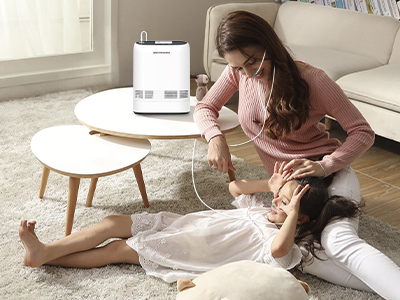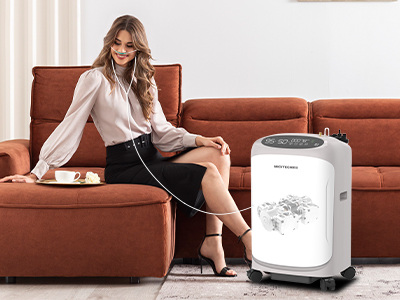16 Aug 2024
Oxygen air compressors are invaluable tools, particularly in medical and industrial applications. To harness their full potential, it is imperative to focus on maximizing their efficiency and longevity. This requires a combination of regular maintenance, optimized settings, and informed usage. By taking proactive steps, you not only extend the lifespan of your compressor but also ensure that it operates at peak performance, delivering consistent and reliable results.

Understanding the Basics of Oxygen Air Compressors
At the core, an oxygen air compressor is designed to increase the pressure of air and separate oxygen from other gases, producing concentrated oxygen. The machine typically comprises a compressor unit, filtration system, and molecular sieve beds that facilitate the separation process. Understanding how these components work together is crucial for optimizing performance. Each element plays a vital role in ensuring that the compressor operates efficiently, providing the necessary oxygen output for various applications.
Regular Maintenance Practices
Routine maintenance is the cornerstone of maximizing your oxygen air compressor's efficiency. Regularly cleaning filters and checking connections can prevent common issues such as blockages or air leaks, which can significantly hinder performance. Additionally, scheduling professional inspections allows for early detection of potential problems, ensuring that the compressor remains in optimal condition. These practices are essential for maintaining the reliability and functionality of the machine over time.

Optimizing Airflow for Maximum Efficiency
Proper airflow is critical for the efficient operation of an oxygen air compressor. Ensure that the area around the compressor is well-ventilated, allowing for unobstructed air intake and exhaust. Adjusting the settings to optimize airflow can enhance the machine’s efficiency, preventing overheating and reducing energy consumption. Moreover, avoiding common airflow obstructions, such as dust or debris accumulation, ensures that the compressor operates smoothly and effectively.
Energy Efficiency Tips
Maximizing energy efficiency is not only environmentally responsible but also cost-effective. Reducing energy consumption without compromising the compressor's performance can be achieved by implementing a few key strategies. Utilizing advanced technology, such as variable speed drives, allows for more precise control over the compressor's operation, reducing unnecessary energy use. Additionally, selecting the appropriate power settings for different tasks ensures that the compressor only uses the energy required, minimizing waste and optimizing performance.
Proper Storage and Handling
Proper storage and handling are often overlooked aspects of maximizing an oxygen air compressor’s efficiency. Storing the compressor in a cool, dry place and protecting it from dust and moisture can prevent damage and prolong its lifespan. Handling the compressor with care, especially when moving or transporting it, reduces the risk of mechanical damage. If the compressor will be inactive for extended periods, taking steps to prepare it for storage, such as draining any residual moisture, can prevent issues that might arise during inactivity.
Upgrading and Replacing Parts
Over time, certain components of the oxygen air compressor may require upgrading or replacement to maintain peak efficiency. Recognizing when it’s time to upgrade parts, such as the filtration system or compressor motor, is key to avoiding performance degradation. Using high-quality replacement parts ensures compatibility and reliability, further extending the machine’s operational life. Consulting with professionals for major upgrades or repairs can provide valuable insights and ensure that the compressor remains in top condition.
Monitoring Performance Metrics
Consistent monitoring of performance metrics is essential for identifying areas where the compressor’s efficiency can be improved. Tracking key performance indicators (KPIs), such as oxygen output levels and energy consumption, provides a clear picture of the compressor’s health. Utilizing diagnostic tools can help detect issues early, allowing for timely adjustments that enhance performance. Making data-driven decisions based on these metrics ensures that the compressor continues to operate efficiently, delivering the best possible results.
Training and Education
Proper training for operators is crucial for maximizing the efficiency of oxygen air compressors. Ensuring that all users are well-versed in the correct operation and maintenance procedures can prevent common mistakes that lead to inefficiencies or damage. Providing ongoing education, including updates on best practices and new technologies, helps operators stay informed and capable of making the most of the equipment. Leveraging manufacturer resources, such as training programs and manuals, can further enhance the knowledge and skills of those responsible for the compressor’s operation.
Conclusion
Maximizing the efficiency of an oxygen air compressor requires a comprehensive approach that includes regular maintenance, optimized settings, and informed usage. By taking proactive measures, such as proper storage, timely upgrades, and consistent monitoring, you can ensure that your compressor operates at its best, delivering reliable and effective performance for years to come. The long-term benefits of these practices include not only cost savings and reduced energy consumption but also the peace of mind that comes from knowing your compressor is operating at peak efficiency.
Keywords: air compressor
Originally published 16 Aug 2024, updated 16 Aug 2024.